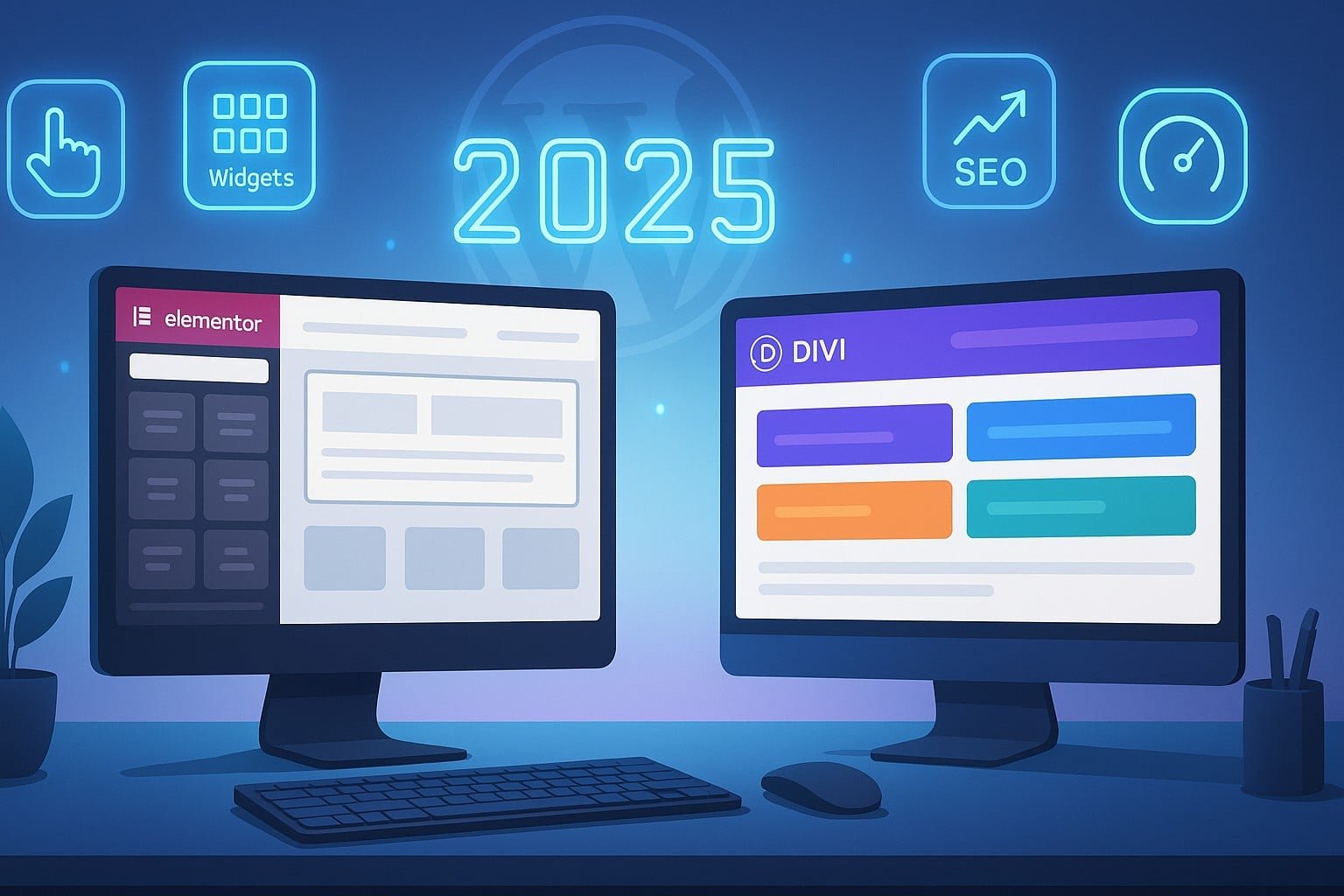By 2025, memes will have become the internet’s new language, readily recognised and widely shared. Industry data shows that meme-based posts have a 10x larger reach and 60% more engagement compared to ordinary graphics. Startups and businesses are using this cultural currency to establish quick relationships with viewers, particularly Generation Z and Millennials, who value humour and authenticity online. Simultaneously, generative AI has become a transformative force in the content production industry. By 2025, AI techniques (ranging from language models to picture generators) will automate and personalise meme generation to unprecedented levels. This article discusses how generative AI works, why memes are so effective, how AI-driven meme marketing works in detail, real-world success stories, pros and disadvantages, top tools, and how Design Web Masters can assist small businesses in capitalising on this trend.
Table of Contents
What Is Generative AI and How It Powers Content Creation
Generative AI refers to advanced AI systems that generate new material rather than simply analyse current data. In practice, generative AI employs massive language and vision models to generate unique text, images, videos, audio, and even software code in response to a suggestion. ChatGPT (by OpenAI) can create human-like articles or social postings, while DALL·E and Midjourney can make bespoke images based on word prompts. This approach is significantly different from previous “narrow” AI, which was mostly rule-based and restricted to tasks such as categorisation or prediction. Traditional AI often uses predetermined algorithms to handle known inputs, whereas generative AI generates novel outputs based on patterns discovered in large datasets. In other words, standard automation fills in a template, whereas generative AI creates unique material.
These AI models are multimodal, which means they can generate various content forms. They can write any type of prose (tweets, blog articles, ad captions), draw or paint images (photos, illustrations, memes), make movies or animations, and even create music or code. Modern tools unite numerous creative processes, such as ChatGPT or Claude for brainstorming copy, DALL·E or Canva’s AI for picture generation, and Midjourney for stylised meme art. Unlike traditional template generators, generative AI can analyse a language prompt (such as “create a meme about Monday motivation”) and generate a unique meme image and caption. These characteristics make it an effective tool for marketers and meme makers to quickly create new, captivating content.
The Rise of Meme Marketing in 2025
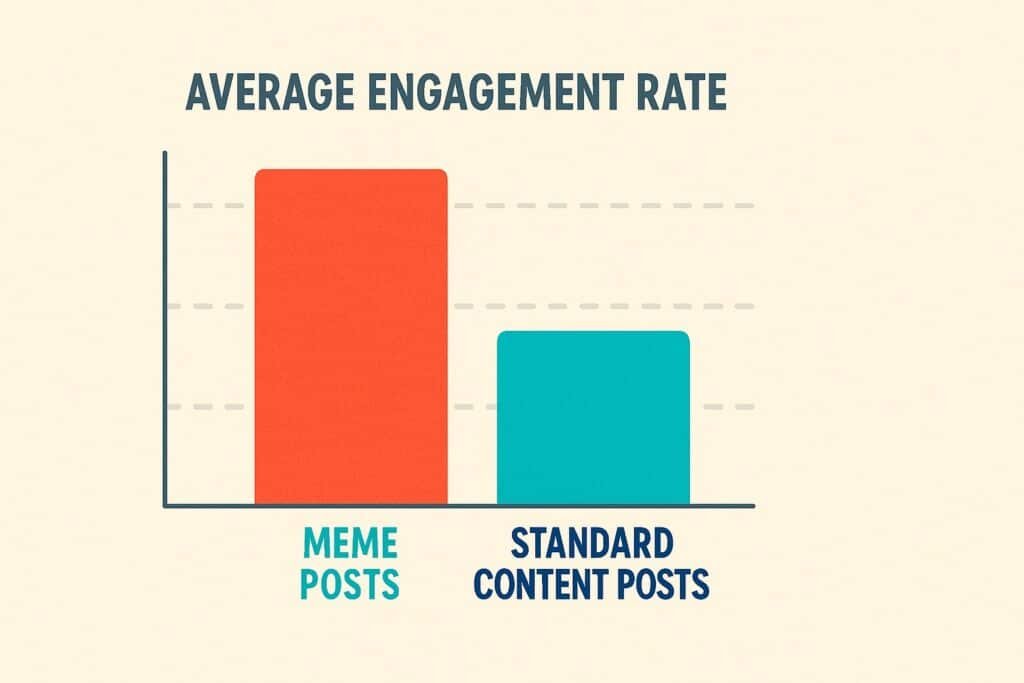
Memes are currently outperforming regular material on social media. Because memes use humour, nostalgia, or “insider” cultural references, they elicit quick relatability from viewers. Memes, according to one analyst, are “based on a framework of experiences (injokes and honest feelings) expressed in a limited number of words and a familiar image.” This makes them a universal language online, particularly among younger people. In fact, data indicates that more than 70% of internet users (ages 13–36) regularly post memes. When a meme resonates with people, they often feel compelled to share it again, demonstrating their understanding of it, thereby expanding the organic reach of memes beyond those of ordinary posts.
- Viral Reach: Memes are more likely to become viral. According to a Boston Institute of Analytics study, meme posts have ten times the reach of static images and generate approximately 60% more organic engagement. The same study found that meme-driven marketing had approximately 14% higher click-through rates than traditional social advertisements or emails.
- Emotional Connection: Memes elicit instant wit and cultural awareness. Users chuckle or nod in accord immediately, forming an emotional bond. The “badge of honour” effect promotes spreading and community-building around a brand’s meme.
- Generational Appeal: Gen Z and Millennials, in particular, grew up “speaking memes.”. They regard memes as a real way for firms to connect. A well-timed meme that reflects their experience appears more relevant than conventional advertising. According to one study, two-thirds of Gen Z and Millennial social media users share memes on a regular basis.
These benefits have a measurable impact. According to a marketing analysis, firms who use meme posts see 60% of their customers “more likely to make a purchase” than those that do not. In short, memes promote word-of-mouth. Instead of getting lost in the mix, a witty meme can cut through feeds and remind people of your brand in an organic way.
Why Memes Are More Effective Than Traditional Content
Memes combine various features that traditional advertisements do not have. They are bite-sized and visually appealing, causing scrollers to pause. A creative caption on a wonderful photograph can be interpreted instantaneously, without the need for a paragraph of text. They frequently mention current events or trends, making them timely. Polished advertisements or videos that take days to create cannot match this immediacy. Marketers have observed that memes generate far more engagement and sharing than regular promotions. One study indicated that amusing “viral” material had 35% more interaction than regular marketing messages.
Furthermore, memes promote community. When a brand employs a meme “correctly,” it feels like an inside joke about its target demographic. Sharing and remixing the meme instills a sense of belonging in your followers. Leaning into meme culture allows brands to appear more human and current. One investigation suggests that disseminating the appropriate meme at the appropriate moment is akin to showcasing a cultural symbol of respect. This makes meme marketing particularly effective at increasing brand recognition and loyalty.
How Generative AI Is Revolutionizing Meme Marketing
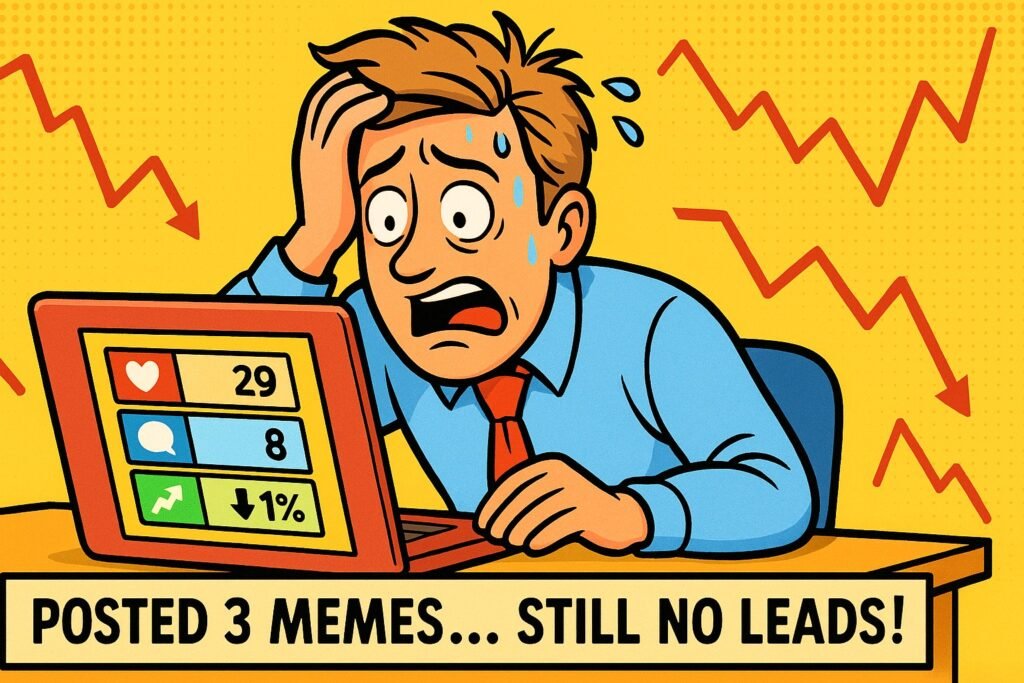
Generational AI is revolutionising all aspects of meme marketing. Previously, a human marketer would manually create memes by selecting an image, crafting a caption, and potentially altering the font. Now, AI can automate and improve that process. Here are some important ways AI is making memes bigger and better.
AI-Powered Meme Generators
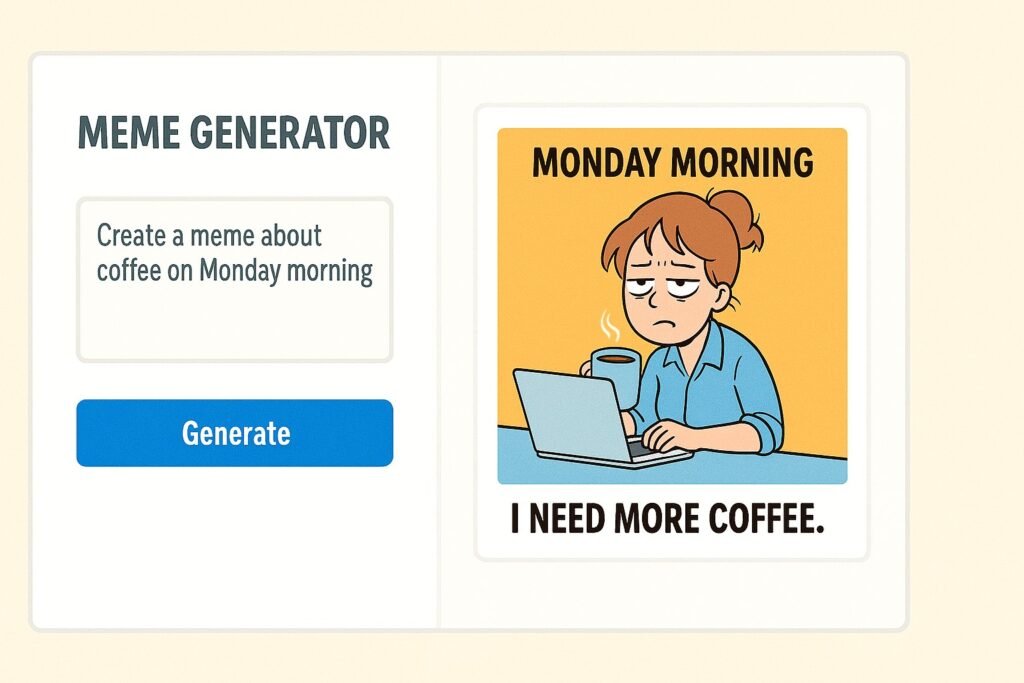
Advanced meme-generating systems rely on artificial intelligence to handle heavy labour. For example, Supermeme.ai is a platform where you can simply type in a quick idea, and the AI “writes the caption and selects the most appropriate meme template” automatically. The end result is an immediate meme graphic that does not require any design work. Similarly, Imgflip’s AI mode allows you to enter a subject, and it will propose captions in famous meme formats (Drake, Pikachu, etc.). Multilingual support and integrated features are common among these generators; Supermeme, for example, allows you to search for or generate memes in over 110 languages! They also include branding tools, such as Supermeme’s built-in watermark tool, which allows you to “easily brand your memes” without the need for an external graphic editor.
The figure shows an AI-generated meme. Supermeme.ai generated this shareable meme image automatically based on a basic query (“Struggling for meme ideas”).
Prompt-Based Captioning + Image Creation
Generic AI models, in addition to specialised meme sites, have the ability to create memes from the beginning. You can instruct a model like ChatGPT to produce a clever description and then input that caption into an image AI (DALL·E, Midjourney, etc.) to create a corresponding image. For example, a challenge like “Create a wholesome two-panel meme about coffee on Monday morning” can generate a whole meme – dialogue, artwork, and all – in seconds. This prompt-driven approach eliminates all manual design steps. The end product is completely synthetic memes tailored to your written directions. According to one AI blog, these technologies “transform simple inputs into viral-worthy memes” by using natural language processing to comprehend your tone and vision. In practice, an AI model handles everything from choosing a known meme template to writing the catchy language, making the process as simple as chatting with a bot.
Personalisation at Scale
With AI, marketers can generate large numbers of memes in minutes. This allows you to hyperpersonalize content for diverse audiences and test multiple variants quickly. According to SmythOS, AI meme tools “allow marketers to produce multiple variations in minutes rather than hours,” allowing them to capitalise on trends as they emerge. For example, an e-commerce company may rapidly develop a batch of amusing memes aimed at various product categories or languages. AI can even change the tone of each meme based on immediate instructions, whether it is pleasant, snarky, wholesome, or edgy. This level of scalability and tuning is not achievable with typical design teams. In essence, you may have an army of AI meme makers working around the clock to keep your brand’s voice fresh and widely understood.
Multilingual Meme Generation with Global Reach
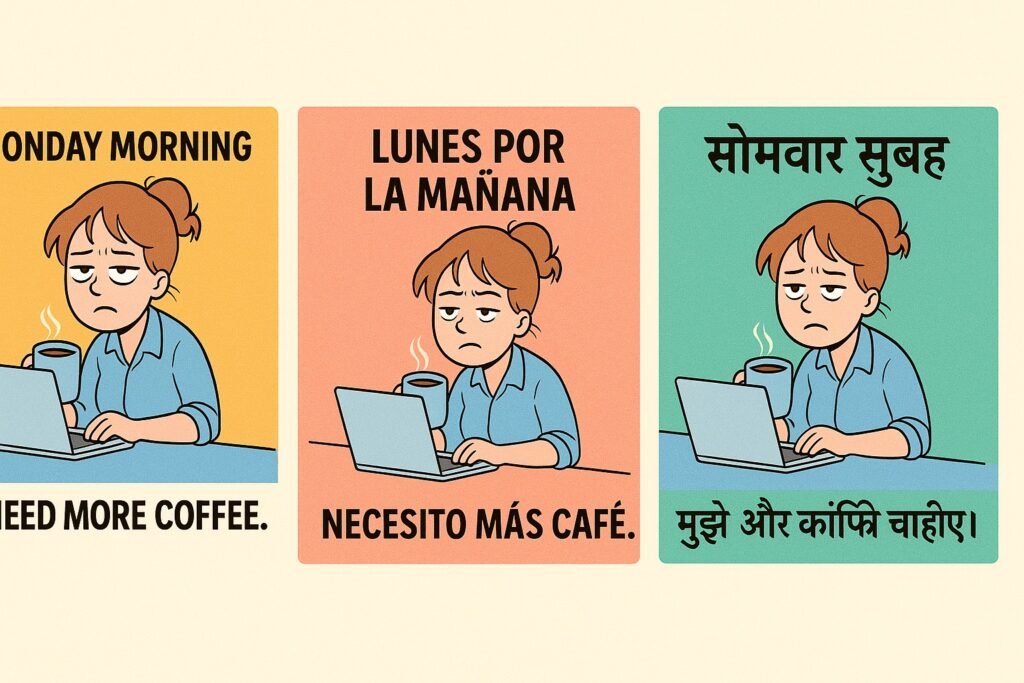
Language hurdles frequently stymie global marketing efforts, but AI overcomes this. Nowadays, meme generators support hundreds of languages. Supermeme.ai openly states that you may search and create memes in over 110 languages. This implies that you can easily autotranslate or localise a meme for a certain region. Consider launching a hot meme in English first, then instantly in Spanish, Hindi, or any other language spoken by your target audience, all with machine translation built in. This AI-driven multilingual capacity enables a meme campaign to scale from local to global without incurring additional costs, significantly increasing your reach.
Trend Tracking with AI models.
Generative AI is highly effective when used in conjunction with AI social listening. Modern AI systems can monitor social networks in real time, identifying the most popular memes, jokes, and topics as they emerge. Hootsuite asserts that “AI makes social listening faster and smarter by analysing millions of posts to reveal sentiment, trends, and emerging topics as they happen”. In fact, an AI can detect when a specific meme template or catchphrase is suddenly popular and even propose ways to riff on it. Marketers can then incorporate such patterns into their meme-generating pipelines. Brands stay hyper-relevant by automatically detecting trending subjects and creating memes around them. In brief, AI transforms meme production into a reactive, real-time process: identify a trend in minutes and have an AI create a meme for it in minutes, keeping your brand in the conversation.
Step-by-Step Guide: How to Use Generative AI for Meme Branding
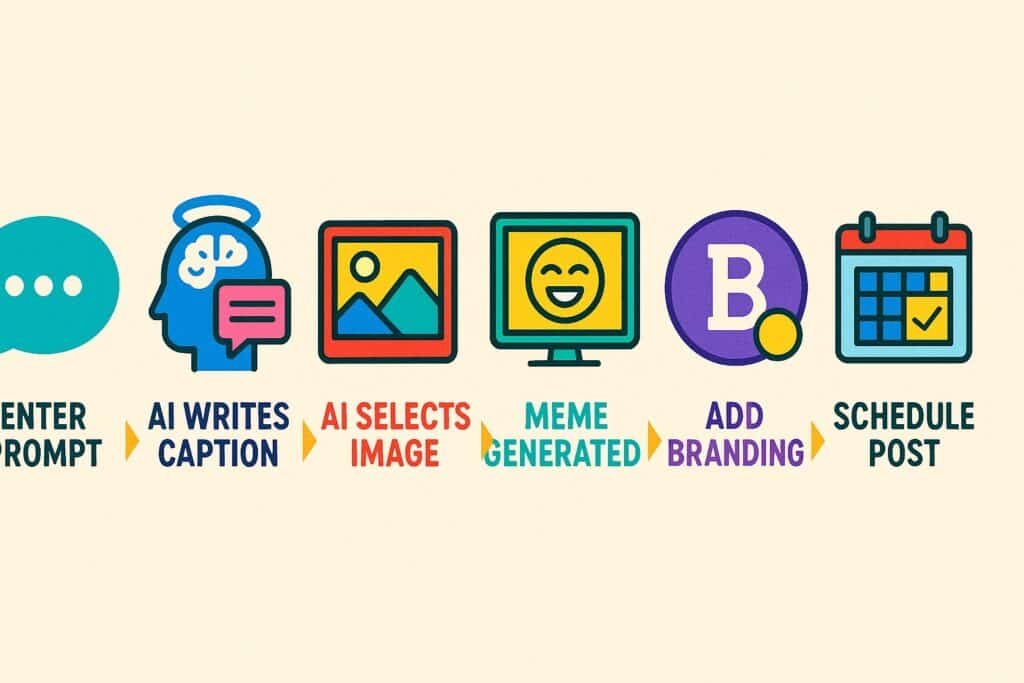
- Choose the Right AI Tool. Begin by selecting a platform that suits your style. The options range from specialised meme bots (Supermeme.ai, Imgflip AI) to comprehensive design suites (Canva AI, Kapwing AI Studio). Each has advantages: Kapwing’s AI Studio excels with animated memes and video formats, whereas Canva’s AI suite is ideal for professional, on-brand templates. Check that the tool provides the formats and customisations you require (social media ratios, GIF support, etc.). If you require extensive customisation and branding, make sure the tool integrates your logo or brand kit (Canva and Adobe Express support brand kits for consistency). For pure experimentation, free tools like Imgflip AI or GIPHY AI can help you get started quickly.
- Craft Smart Prompts. The prompt is the key to success with AI memes. Please provide the AI with clear instructions regarding the meme’s theme, tone, and format. For example, instead of “meme about coffee,” try “creating a funny two-panel meme about Monday morning coffee with a surprised cat.” Incorporating specific details (scene, mood, caption style) will improve the outcome. If you want text and an image, you may first create the caption with a language model (ChatGPT) and then use that text in an image generator. Many AI meme generators allow you to type in normal language, and they will handle the rest – they “understand context and meme trends” and select the appropriate template. For direct humour, try using prefixes like “wholesome,” “sarcastic,” or “viral.”
- Add Your Brand Voice and Visuals. After creating a draft meme, please ensure it aligns with your brand. The AI outputs may not include your logo, colour palette, or catchphrases by default. If the program allows it, use your logo or domain name as a watermark (Supermeme.ai includes a watermark option). Edit the font style or phrasing to include company lingo or taglines. Adjust the caption slightly to sound more “you”—just as you would a design created by an intern. Remember that AI generates broad data; therefore, you must actively insert special brand flavours.
- Test various tones and formats. Experiment with different humour styles: certain memes are more effective when they are funny or outrageous, while others are sophisticated or wholesome. A/B testing involves posting two versions of a meme with varying phrasing or styles to see which one resonates. Be mindful of the company’s requirements; excessively provocative witty memes could be off-brand. Consider meme formats such as static images, GIFs, and short videos. Kapwing and GIPHY, for example, provide an easy way to make animated memes. Variety keeps your viewers interested.
- Schedule posts and assess performance. Don’t send out a torrent of memes at once. Use a social scheduling tool (such as Buffer, Hootsuite, or Later) to space them out and ensure constant posting. Keep track of each meme’s performance, including likes, shares, comments, and click-throughs. AI also helps, as certain programs (such as Kapwing’s Studio) contain basic analytics. Memes can increase interaction by up to 35% compared to regular postings, according to marketing statistics. Use the input to improve future memes.
Do’s: Stay on-brand and culturally sensitive. Use memes appropriate for your industry/audience. Localise humour appropriately, particularly when publishing multilingual memes. Always attribute or assure the fair usage of any underlying meme templates. Don’ts: Don’t rely only on AI without a review; AI can misinterpret slang or context. Avoid potentially offensive memes, as well as hot memes with underlying controversies. Finally, don’t overuse memes to the point of boredom; even enjoyable stuff can become irritating if pushed or off-topic.
Use Cases and Real Brand Examples
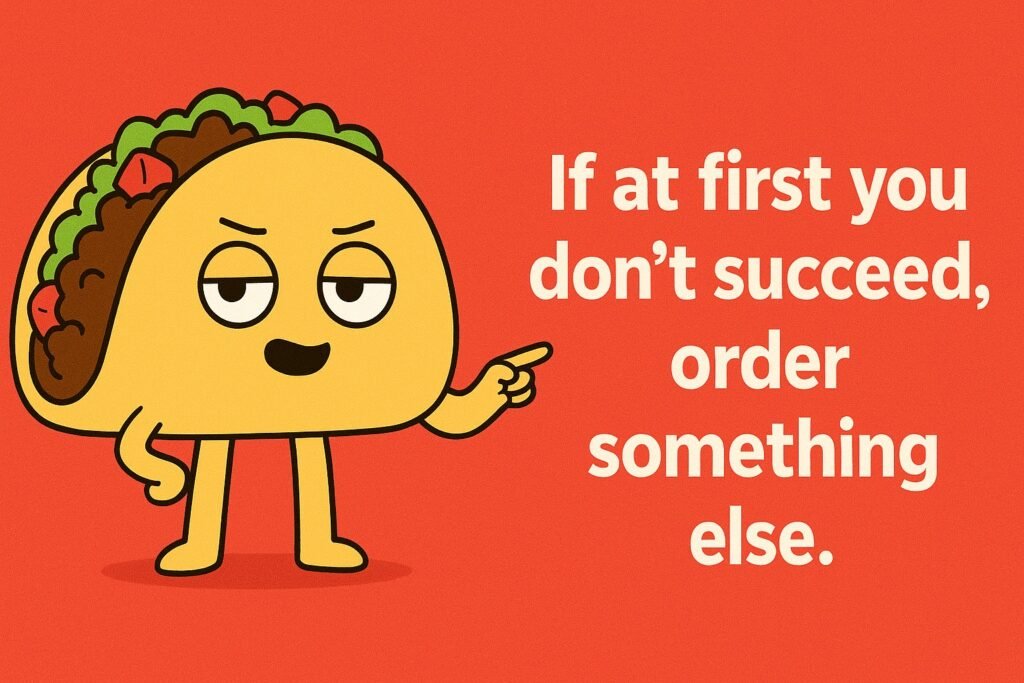
AI-powered memes aren’t just a notion; they’re already producing results for brands of all sizes.
- Small Business Case: Consider a hypothetical local café. Before employing memes, their Facebook postings had an average of ~100 views. After producing a series of AI-generated memes regarding daily specials and local gags, their average reach tripled (think 200% increase). Fans began sharing memes of their own, which naturally increased word-of-mouth. While this specific data is illustrative, many small firms report significant increases in social metrics after nailing the meme voice—growth that is impossible with ads alone.
- Zomato (meal delivery): The Indian meal delivery app Zomato is well-known for its meme-savvy marketing. It converts genuine consumer encounters and local gags into viral content. For example, one Zomato Twitter post about a misdirected “fish fry” order (with the rep quoting a popular rhyme) went viral, with approximately 300,000 views. Users screenshotted a push-notification meme (“Akansha is on leave… Order lunch, says Shefali from marketing”, which received 90,000 retweets. Zomato’s irreverent tone encourages user participation: followers frequently engage with the brand, resulting in a self-sustaining meme culture.
- Wendy’s (Fast Food): The Wendy’s X (Twitter) account is famous for meme roasts. It frequently converts rival references and viral jokes into hot memes. According to a study, Wendy’s employs memes like “I don’t feel so good” (a movie allusion) to ridicule competitors, resulting in millions of impressions. Wendy’s uncensored, meme-friendly voice has earned them a social media darling, demonstrating that even huge brands can profit from an irreverent tone.
- Duolingo (Education App): Duo, the app’s green owl mascot, has transitioned from study assistant to meme influencer. The company adopted “unhinged” humour regarding language learning, such as flirting with celebrities and participating in viral challenges. These AI-style memes (typically in the form of short videos or graphics) have generated a lot of attention. As a result of its focus on meme culture, Duolingo has over 7 million TikTok followers.
- Netflix (Entertainment): Netflix has a history of using memes to its advantage. The “Bird Box” challenge, inspired by a Netflix film, became unexpectedly popular, with enthusiasts sharing blindfold antics. Instead of suppressing it, Netflix embraced it, adding amusing safety tips with the meme. The reaction kept Netflix in the news and on social media well after the film’s release.
In all of these circumstances, trend knowledge was critical. The businesses (or their agency) were effectively performing AI-level social listening: identifying what people thought hilarious and stepping in. In reality, using AI tools with social listening automates this process. Advanced systems can scan millions of posts, identify meme trends as they occur, and even recommend captions. This implies that your company could be the first to incorporate a new trend into a meme and immediately capitalise on its virality.
Pros and Cons of generating AI for Meme Marketing
Pros:
- Speed and Scale: AI can create content practically immediately. What took hours to design now takes minutes. This enables brands to adapt to trends in real time.
- Creativity Boost: AI can surprise you with unexpected captions and visuals, encouraging new thoughts. It democratises creativity; not every meme needs a graphic designer or copywriter.
- Cost-effective: Using AI is typically less expensive than outsourcing content development. You may create an unlimited number of memes for a low cost, which is ideal for small enterprises on a tight budget.
- Personalisation and reach: AI makes it simple to customise memes for specific audiences or languages. You can localise your humour and communicate directly to specific audiences, which enhances relatability.
- Higher interaction: By harnessing humour and trends, AI memes can generate substantially more interaction than generic promotions. Studies reveal that well-crafted, hilarious content receives 35% more interaction than conventional posts.
Cons:
- Tone Mismatch: Because artificial intelligence lacks true common sense, it may overlook subtle humour cues. A generated meme can occasionally be off-tone or slightly off-brand, necessitating manual tweaking. Over-reliance on AI may dilute your distinctive voice.
- Cultural Sensitivity: AI models may unwittingly generate tone-deaf or inappropriate memes, particularly when discussing delicate issues. Experts warn that generative AI without protections can occasionally generate “misleading or harmful content” if not properly controlled. Brands must double-check their outputs attentively.
- Meme Fatigue: Posting too many memes, even if they’re AI-generated, might exhaust your followers. Not all memes succeed; excessive meme use can turn off followers. It’s critical to choose quality above quantity.
- Overreliance on automation can be problematic; while tools are useful, they lack human judgement. Human monitoring is crucial. A poor AI-generated image or description might harm your image faster than a well-intended post. Always check and edit before posting.
Balancing Act: The optimum strategy is a hybrid approach. Use AI for efficiency and inspiration, but have a human marketer review the content for brand alignment and sensitivity. In practice, guardrail your AI workflow by pre-approving meme templates, establishing style criteria, and keeping a human in the loop for final curation. This way, you have the size of AI while maintaining the delicacy of human ingenuity.
Top Generative AI Tools for Meme Creation in 2025
There are numerous AI systems designed for memes and social media:
- Supermeme.ai is a dedicated AI meme generator. Please enter your idea, and it will create a professional meme. It touts a “true meme generator” method, which means it uses AI to produce memes rather than simply adding text to images. It supports over 110 languages and bespoke watermarks, making it suitable for large-scale, branded meme campaigns.
- Canva AI: The AI-powered design suite now incorporates meme creation. It can recommend image designs and captions based on your niche. Its AI understands your brand kit, so memes remain on-brand. Notably, marketers that used Canva’s meme function received 32% more Instagram engagement than static posts.
- Kapwing AI Studio: Kapwing provides an AI Meme Studio for both animation and video memes. It analyses trending memes using social APIs and allows you to easily create GIFs or short video memes. Kapwing automatically resizes content for all platforms and includes features for team collaboration and statistics.
- GIPHY AI: Known for GIFs, GIPHY also offers AI-powered tools for creating meme GIFs. You input a caption, and it produces animated replies or quotes. These are ideal for sites such as Slack and Twitter. You can also upload your own photographs for AI labelling.
- ChatGPT + DALL·E (or other LLM + image AI): Use ChatGPT to compose meme captions or jokes, then use an image AI (e.g., DALL·E, Stable Diffusion, or Adobe Firefly) to generate the image. This combination provides maximum flexibility for unique, complex concepts.
- Midjourney: Midjourney is not a meme; it specialises in creative, surreal images. It can be used to create more creative or abstract memes (such as a weird scene with a clever remark). It’s especially useful when you want a distinct style or high-quality artwork that sticks out.
Other significant tools that contain AI components include Imgflip’s AI Meme Generator, Predis.ai, and mobile apps like Mematic.
Each instrument has advantages, so experimentation is essential. Check out the lessons or demos for each to find which one best fits your workflow. For example, if you’re a marketing team, a collaborative platform like Canva or Kapwing may be the ideal choice. If you merely want rapid, funny results, Supermeme or Imgflip may be sufficient.
How Design Web Masters Helps Small Businesses Automate Marketing
Design Web Masters specialises in helping small businesses grow their brands by leveraging cutting-edge AI and automation technologies. Whether you need a new website or a viral meme campaign, we have you covered. For example, our web development and WordPress development services ensure that your website is quick, entertaining, and ready for AI-powered content. We create customised landing pages using best-practice landing page designs to convert visitors into leads.
On the marketing side, our team is implementing cutting-edge SEO methods for 2025, including local SEO, to increase your presence in your area. We offer content marketing solutions that include smart memes and data-driven material, as well as conversion rate optimisation to turn those visitors into sales. Do you want to capture social buzz? We offer a wide range of Facebook marketing services, from running Facebook ads to optimising your Facebook page with compelling content formats.
We also prioritise security and performance: read our advice on Site Security, Website Maintenance, and Analytics to keep your site safe and data-driven. Are you intrigued by the concept of artificial intelligence? Read our blogs on AI in Web Design 2025 and Agentic AI in Marketing to learn how we automate campaigns. Our expertise can help you with whatever you need, whether it’s improved rankings, a more appealing website, or a viral marketing campaign. Ready to work smarter? Contact us, and let’s turn your brand into the next major meme success story.
Conclusion + Call-to-Action
In 2025, the formula for viral marketing will include generative AI and memes. AI enables the creative horsepower to quickly generate attention-grabbing meme material, while memes’ inherent shareability allows any business to stand out in the online noise. When used thoughtfully, this combination increases engagement, fosters community, and humanises your brand. For startups and small enterprises, the message is clear: use AI-generated memes as part of your content strategy. An unconventional meme could potentially propel your business to new heights.
Want to start your own viral meme campaign? Connect with Design Web Masters today! Our team will create a custom AI-powered plan for you, from creative concept to execution. Whether it’s creating your brand’s own meme voice or automating your social media, we’ll help you go viral – with smart tech and a personal touch. Contact us to get started on turning your brand into the next meme legend!
